#you can imagine however that the lady is much less sympathetic to the modern day dalish
Explore tagged Tumblr posts
Text
Codex Entry #92: A Ghoulish Delight
My dearest Regine:
Surely you must have heard of the Paget's failing fortunes? They've lost almost everything. The lord made some bad decisions and trusted people he shouldn't. All that's left is La Maison Verte, in the Dales. They have to sell it and move to the city. I was called upon to find someone willing to buy the house. You would be so proud of me. I surpassed all the lord's expectations.
I looked into La Maison's history first. Did you know it was built in the time of the elves? It was a sanctuary dedicated to Andruil, goddess of the forest; the house was built around the ruins. The heart of the shrine was an etched stone altar, now in the grand hall. It's quite spectacular. Any noble in Val Royeaux would be envious of something with such historical significance. I planned a party to show off the house and its elven altar. We had it decorated with white flowers and candles, even brought in some harts to graze in the garden outside. The effect was stunning.
Then, my stroke of genius! Remember when Lady Carine's pastime was reading about elves, and how sympathetic she was to what happened in the Dales? She couldn't stop talking about how we must make contact with the restless elven spirits. All her lady companions were so taken with the idea. Well, I did just that. Or I made the guests believe that's what happened. I had to hire a mage to help, of course—a very discreet fellow from Montsimmard.
During the party, I talked about how the house was a haunt for sad elven spirits. They ate it all up. Romantic, they said. For the final touch, I had everyone join hands around the elven stone and pray, and the mage (no names!) cast a spell that made us dance like puppets on strings and sing "The Little Bluebird of Summer."
It was a triumph! Offers began pouring in! One of them was even from a representative of Grand Duchess Florianne.
Oh, I have so much to tell you. I can't wait to return.
With great love,
Ignatius
#i like this one because i think it represents orleasian nobility perfectly#“any noble in Val Royeaux would be envious of something with such historical significance”#val royeaux wants to believe itself to be scholarly and cultured#so it's natural that acient relics plundered from elven ruins is a symbol of status to hide away in a lord's mansion#even if the elves and their gods are considered heathens#while the elves themselves struggle to remember and recover the slightest pieces of their past#“remember how [Lady Carine] is sympathetic to what happened in the Dales”#you can imagine however that the lady is much less sympathetic to the modern day dalish#or all the elven servants she presumably has#not even going to comment about her interest in the the 'restless elven spirits'#and lastly#Orlais is the center of the southern chantry#that as you know split from the northern one because magic exists to serve man!#and to protect people from the evil apostates#but honestly?#it should be magic exists to serve me#since once again a wealthy orleasian manages to have a pet mage to do whatever current frivolity they require#Vivienne even says that in Orlais mages were like acessories before the rebellion#anyway lots of tags today and lots of contempt for orleasian nobility too#dragon age#dragon age the veilguard#dragon age dreadwolf#a codex a day keeps the dreadwolf away#dragon age inquisition#orlais#datv#dav
6 notes
·
View notes
Text
The Three Caballeros Ride Again Review!: And Ladies (Ride of the Three Caballeros)

Saludos Amigos! I’m back with yet another comics review! And we’re back on The Ride of the Three Cablleros! Thanks again to WeirdKev27 for commissioning this retrospective. It’s going to get pricey and I greatly appreciate it. PREVIOUSLY ON RIDE OF THE THREE CABLLEROS
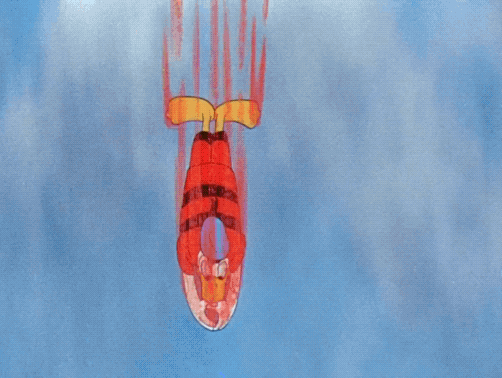
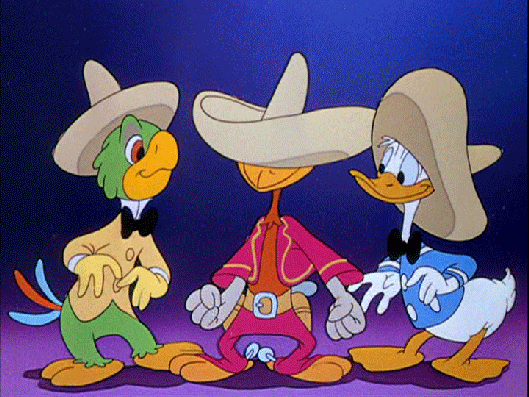
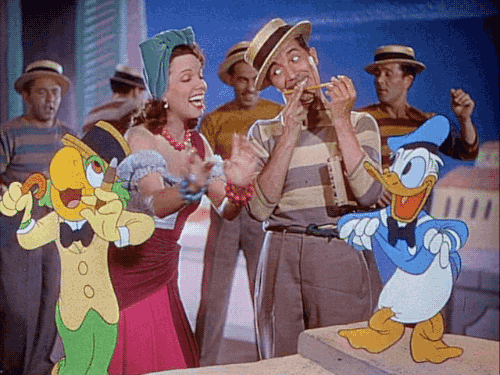
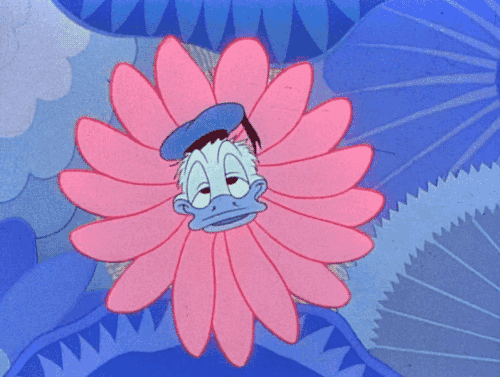

In short.. a bunch of short segments of varying quality, a very thirsty Donald hitting on ladies, the first appearance of Panchito and some very good music. A fun time was had by all. Along with a LOT OF drugs by the Disney Animators. The film wasn’t a huge success, but out of the 6 package films, it was a fan faviorite alongside the Mr. Toad and Ichabod movie, and thus was rereleased quite a bit, as well as being one of the first of this era to end up on VHS due to it’s cult popularity. As for Panchito and Jose they’d get plenty of success overseas, with both getting solo series in their respective home countries, Jose himself having just resumed having comics again this year, and being rightfully massive characters. But despite being a hit with fans across the world.. in the US... they were pretty much shoved in the Disney Vault for a few decades. Jose would show up on the Wonderful World of Disney, in it’s various forms, three times after the Three Caballeros while Panchito just vanished aside from reuses of the Three Caballeros footage. Their careers in the US just sorta vanished for a few decades. But as suddenly as they vanished, our boys returned triumphantly. Naturally being the most used out of the duo, Jose would show up for the first time in decades during Mickey Mouseworks, a show full of new late 90′s produced Mickey Mouse shorts, all but two of which would end up being recycled for the much more popular and well loved House of Mouse, which would feature the triumphant return of the Cabs to animation after so long away. We’ll get to that next time, as just a year before the Cabs had already reunited in the pages of Walt Disney’s Comics and Stories in one of Don Rosa’s best loved tales. The Ride of The Three Caballeros was something Don Rosa had wanted to do since he got the job writing Duck Comics in the first place. As he explained in the back of the complete library edition named after this tale, Uncle Keno isn’t the biggest fan of the Donald Theatrical shorts. Having experienced the Carl Barks comics first, and having built his career around them later, he just wasn’t a fan of the goofier, angrier, less nuanced theatrical short Donald, often feeling like he was an entirely different character from the one he loved. And.. honestly he’s not wrong. Both were built for entirely different kinds of comedy: While both did slapstick, Slapstick, along with standard comedy shenanigans, was the main weapon in Shorts Donald’s comedic arsenal. Barksian Donald, while not immune to slapstick, was more like a well built sitcom character: Multi layered, sympathetic when he needs to be, but still having tons of faults to be exploited for laughs and to play off other characters. As a result while I like Donald in the shorts I do prefer Barks version of him, and the shorts Barks did are usually the best of both worlds, combining Donald’s everyman schtick with his slapstick schtick. Of course later cartoons would pick one or the other or combine both, but I do get his point and at the time he wrote this story the only cartoon show starring Donald was.. Quack Pack.. which I can only imagine his reaction to seeing that train wreck.
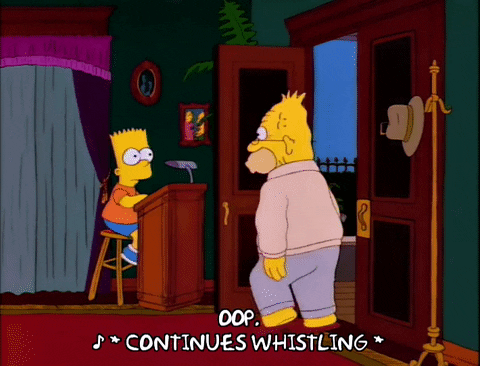
But as you can probably guess there was one exception and it was The Three Caballeros. Don genuinely enjoys the beautiful music and the wonderful chemistry the three have. So after a trip to Mexico gave him the perfect setting and the fire in his belly to finally do it, he finally wrote the story. And since they weren’t Barksian characters and hadn’t had any other apperances in decade, Don also took a dive into their comics. Since Jose was more of a fancifial freeloader in his comics, Don decided to ignore this characterization and go with his own based on the film: A latin playboy and lounge singer. And i’m okay with him doing that, as unlike say with Marvel and DC when they destroy a character, Disney characters are both more fluid continuity wise and his is still rooted in a version of the character, and he’s fully accepting and apologetic that some fans hate him for this. Also for some damn reason they redesigned Jose at some point in his Brazil to look like this:

This is far from the dumbest comic book costume change i’ve seen, but it’s certainly one of the most lame, as his original outfit is dapper, stylish and fits the Brazilian version of him well. And it’s not like you CAN’T update the classic Disney characters with modern appearances. Quack Pack, which has somehow come up twice in this review, did so great with Donald and Daisy, giving them new clothes and a haircut in Daisy’s case but both still look great. Same with Goofy for Goof Troop who just wore a dad sweater and bow tie, which puts him in the small but significant club of “Bow Tie Wearing Characters who have defined my life” with Opus the Penguin and the 11th Doctor. You can update a classic character’s’s appearance without coming off like...
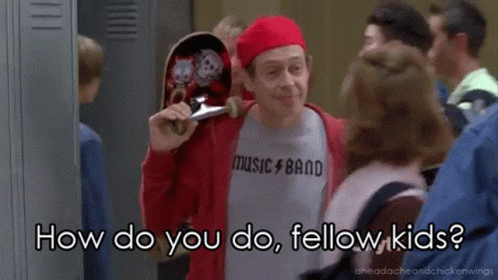
Which given Jose’s outfit there is horrifyingly similar, says something. Anyways, Rosa had more use for Panchito’s stories, which had him as a cowboy protecting small towns with the help of his trusty steed Senor Martinez. Rosa loved both aspects and thus used them here, with Martinez getting a makeover to fit Rosa’s style better. Rosa is also the one to popularize Panchito’s last name, having found it on a scrap of research, not realizing the character’s last name was not at all widespread and thus giving him a canon one that has stuck to this day, and sighing in relief when he finally got conformation from another fan this name was indeed something Disney had used after loosing his research scrap. So with the two boys characters set, a plot set up and a whole sequence planned we’ll talk about on the way “The Three Caballeros Ride Again!” was born. How good is it? Well join me under the cut and i’ll tell you.
We open in Mexico, specifically near the Barranca Del Cobre, aka The “Copper Canyon” of the Sierra Madre, a natural land formation simlar to the Grand Canyon that Don Rosa saw during his trip and thought would make a great setting. While larger than the Grand Canyon, Rosa figures in his notes it simply isn’t as popular because it’s more isolated than the Grand Canyon and that, combined with it having trees inside distracting from it’s rugged beauty, makes it much harder to build a tourist industry around. The four are headed to El Divisadero, because this comic is determined to kill me with it’s difficult to spell names apparently, where Huey, Dewey or Louie spouts off for no particular reason about the currently being built Chihuahua El Pacifico Railway. Seriously the boys might as well be the security guard from Wayne’s World in this comic, their role for most of their brief page time is just to set up stuff for later. I mean i’m fine with setting up your setting but there are better ways than just spouting off tons of exposition apropos of nothing.
Donald has driven the boys here for a Woodchuck Jamboree. I did actually look into Jamborees, as before this it only had ever come up in one of my favorite movies of all time, Moonrise Kingdom, and mentioned occasionally in the Ducktales Reboot. Jamboree was first used for a worldwide scouting Jamboree but has gone on to mean a huge gathering of scouts, with the Boy Scouts of America having one every four years, so odds are it’s just a big yearly or quarter yearly thing for the woodchucks. Still it would be nice to see a big gathering like this in the series, especially since several of our cast are involved in them, including the possible power trio of Huey, Violet and Boyd, and Della and Launchpad could easily be slotted into the plot as seen in this season’s premiere.. as could Dewey and Louie if they really want to since according to Frank their members.. they just aren’t nearly as invested as their brother, and thus don’t do Woodchuck stuff unless he drags them into it, as seen with “Day of the Only Child” in the series itself. It does make sense: Dewey doesn’t have the survival instinct or patience for camping, and Louie hates effort, the out doors, and doing things for anything but profit. Scouting is all of that. So the boys have driven all this way for the Mexican Jamboree, as they’ve been carefully raising their tarantula Tara, and the Tarantula Breeding Badge is only given out in Mexico, which is plausible: Different branches of a worldwide organization would have different awards and what not in different countries. And Tarantula’s are also native to mexico so that makes sense.. and I want you to apricate that I’m afraid of spiders, not cartoony ones, for instance, this is adorable.

Galvantula4Life. But real life ones or realistic looking ones? Yeah no fuck that. So I had to go to the Wikipedia entry and see several horrifying looking sizeable spiders for this one tiny fact. Your welcome. Tara ends up on Donald’s face with the boys assuming Donald is sad to see her go instead of you know FUCKING TERRIFIED A GIANT SPIDER IS ON HIS FACE. This gag does not work.. but probably because as I said i’m afraid of spiders and this is my nightmare, you little sociopaths.
The boys however worry about what Donald will do for the weekend as they prepare to board the bus to the Jamboree... why it’s meeting in an out of the way town like this I have no idea, but i’d guess plot convince. They realize he has no friends, which Donald shrugs off, and they REALLY shouldn’t say to his face, but ruminate on it once he leaves to do whatever after vaguely talking about friends he had in the past.
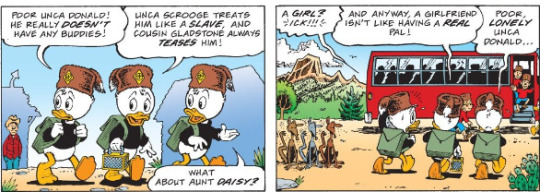
I like this scene even though it annoys me a bit: Ilike it because it does set up how Donald really DOSEN’T have any friends in the comics. It’s part of WHY Rosa was drawn to the Cabs: Their one of the few equal relationships donald’s ever had, people who treat him as a partner, in both sense probably, a friend, a true amigo. As the boys point out Scrooge is a monster to him in the comics, paying him 30 cents an hour which I actually put into an inflation calculator to get an accurate read on how little that was by 2020 standards.. and it’s 3 dollars an hour. Hence why I call him a monster, why that bit hasn’t aged well, and why Rosa REALLY, REALLY should’ve retired it. It dosen’t help reading that knowing Disney largely treated Rosa the same way is cringe inducing at best, if not for any fault of his own. It being cringe inducing for an employer horribly mistreating and underpaying his employees though is his fault, he’s a grown ass man, even in the 90′s this had to be a problem, be better.
And yes i’m being hard on Don Rosa but just like with the comics thing, I simply expect better from the man given just how much respect I have for the guy. His art is gorgeous, his research is immaculate, his knowledge of old films is wonderful and his love for them so infectious i’m tempted to seek the ones he’s mentioned in notes out. He’s a truly wonderful guy and one of my faviorite comic writers.. but I have to treat him fairly like I do ANY of my idols. Just to prove that, I love Grant Morrison, especially his run on New X-Men, but a lot of it hasn’t aged well including some of the language and the entire subplot with Emma manipulating Scott into having an affair when he wasn’t in the best mental place and she knew that and was acting as his therapist, and treating that as a regular affair REALLY doesn’t play well nor should it have. I love Al Ewing, with all my heart and soul, but his run on Ultimates, while having some great worldbuilding and a spectacular cast, ultimately wasn’t very good after the first arc. Not terrible but not good. John Aliison, of Scary Go Round and Giant Days fame, while impressive has had plenty of stories I just didn’t like for various reasons and will probably get into some day and some parts of his stories haven’t aged well. It’s the hard but necessary part of being a critic: You have to be objective and see all the parts of a creator’s creation, not just the ones you like and call them out when they screw up. To me being a fan isn’t about just blindly loving something, it’s about knowing WHY you love it and being willing to call out faults while still thoroughly enjoying the work. There’s a fine line between being blindly loyal to someone, which has created Zach Snyder's awful cult of personality that I hate so much, and being an overly critical shithead and I hope I’m straddling that line.
Back on the scene after that filibuster they point out Gladstone, who himself is a monster to me for how he doesn’t lift a finger to help his nephews or cousin, and constnatly flaunts his luck to Donald, and is a bit more than teasing especially since he tried to, you know, steal your house once boys. That’s canon.. that’s a barks story so it’s canon here. You.. You remember that right? He tried to steal your house. And we will be getting to that one next month, just you wait. Finally the Daisy part that annoys me slightly. The boys being sexist.. was sadly the style at the time this story is set, the 1950′s, and thus plays better for me than it does in Ducktales, as their just little boys and don’t know better. Them assuming Girlfriends aren’t like having friends, while accurate though does bother me a bit, but only because the way this story treats Donald’s relationship is PRETTTTTYYYY bad and this sets that up. But we’ll get to that. Thankfully this foreshadowing of terrors to come is quickly forgotten as we get a GENUINELY great two panels of Donald lamenting his lack of friends. It just works really well, selling his loneliness and how isolated he truly feels without any, which while I have friends I can relate to as I only really hang out with on regularly.
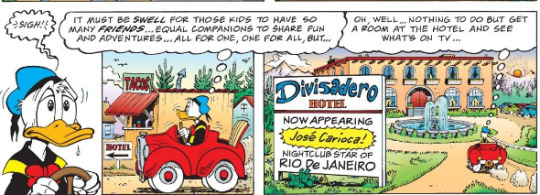
This is what I was talking about. While I will point out Rosa’s flaws.. their truly outweighed but his artistic mastery. In just three panels he really has a truly emotional and heartrending scene, and just that one close up among them is all we need to get the true depths of Donald’s loneliness. I can be hard on the guy, but it’s because he’s one of the best there is, best there was, and best there ever will be and thus I hold him to a high standard. But with that we transition to...

Or rather first his boss at the hotel, whose pissed his headliner has skipped out on him again to woo a lady, and while he plans to fire the guy, only isn’t throttling him because he figures one of his “Senorita’s” boyfriends will do that for him. And while I do like Jose as a playboy i’m not really fond of him trying to have sex with someone in a relationship, as it puts both him and the person he’s having an affair with in a really bad light. It does fit the character, I just don’t have to like it. As for this particular Senorita, it turns out her boyfriend is a notorious Bandito and is thankfully out of town. So yes, Jose is essentially acting out Come A Little Bit Closer by Jay and the Americans.
youtube
Naturally just like the song, said Bad Man returns, Alfonso “Gold Hat” Bedoya, a machete wielding baddie who while understandably pissed about another man making time with his girlfriend, is less understandably about to murder Jose. Though unlike the song, Alfonso’s Lady, rather than help Jose, encourages her boyfriend to murder him and clearly has a fetish for cheating on her boyfriend with various men and watching as he kills him which.. Jesus. This is why while I don’t LIKE the idea of Jose hitting on women in a relationship it does work here, as he’s still not nearly as bad as either of these two, so it evens out. Jose escapes with his umbrella but crashes.. right into the back of Donald’s car. Rosa, Alfonso’s lady, encourages him to murder both of them for funsies, and being a brutal thug, Alfonso obliges and shoots at the car. And since, to quote the duck himself, Donald doesn’t like being killed “Even a little”, he books it out of there.
Alfonso doesn’t peruse them though. He’s on the trail of a treasure hunter who has a map to the lost town of Tayopa, which contains untold silver, but before he can do that he has important buisness to get to.
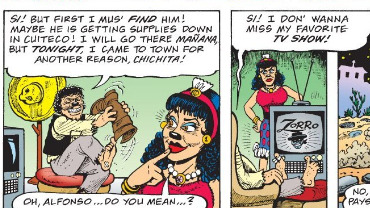
I fucking love that gag and that Rosa snuck more adult gags in there knowing plenty of Duck Fans, such as myself, are grown men, women and others who can handle this sort of thing, while still slippnig it past the kids.
Donald, once the fear’s worn off a bit, starts to wonder WHY he’s running when he’s not the one who pissed off the guy, and ignores Jose’s good point about the fact Alfonso really dosen’t seem like a guy who sees nuance.. until Donald sees a wanted poster for Alphonoso and keeps driving. He eventually gets far enough away to feel safe.. and confront the guy who got him into this mess.
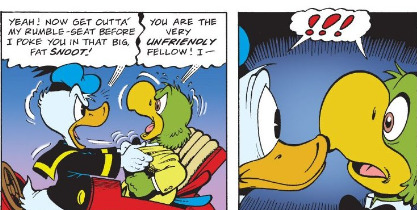
Now kiss. While sadly, they do not, we do get a lovely warm reunion between old pals. Rosa keeps their past vauge as, correctly, he pointed out in his authors notes that the Cabs movie really had no plot, accurate, so instead just vaguely alluded to Donald having known the two in his pre-daisy and boys past and likely had similar adventures to the movie, but adapted more for Rosa’s barksian universe. Jose explains he often finds himself cash poor and thus hits the road to drum up some money, and Mexico is a great place for that as it has plenty of tourist money.

Though as Jose talks about their past we get the most uncomfortable running gag of the story.
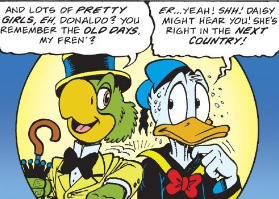
While Donald’s paranoia here is played for laughs.. it just.. isn’t all that funny that Donald’s relationship with Daisy in the Rosa canon is apparently sooooo deeply unhealthy that just HEARING about him having a romantic past before him, as Rosa confirmed this was pre-daisy in his notes, causes Donald to panic and worry she actually somehow heard this. It just isn’t funny.. it speaks of MASSIVE relationship issues and some form of domestic abuse on Rosa!Daisy’s part. It’s stuff like this why there’s only a handful of Donsy relationships I like: Her treating him like shit is reduced to a punchline, instead of being used for character growth. It’s also why I’m deeply dreading covering “Legend of the Three Cablleros” at the end of this retrospective. I just don’t like when Disney media treats Daisy expecting too much of Donald or being hyper jealous of him as hilarious and while I take this more as the story not ageing well rather than barks fault, as since then Domestic Abuse against Males has become a more widely known and talked about issue, it still doesn’t’t make it plesant. It just makes this not entirely his fault. Just like it’s not Stan Lee’s fault this panel is both deeply hilarious and uses a now kinda racist term.
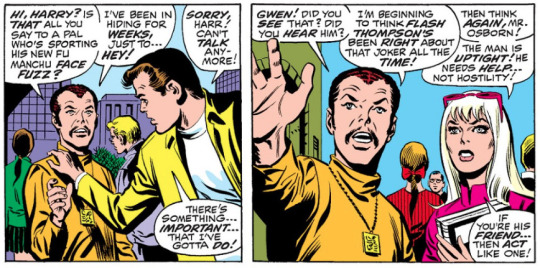
I named an entire youtube channel after that.. we all have our regrets. I also bring it up since currently Harry’s become terrifying villain Kindred... and thus the current big bad of an entire Spider-Man run and the being hopefully bringing one more day into the light and hopefully leading to it’s undoing.. once had a goofy mustache he genuinely referred to a “Fu Manchu Face Fuzz” that for all we know he regrew under the mask.
Donald fondly remembers the old days of being a badass adventuring team and decides, screw it, let’s go show that Gold Hatted Paloka whose boss.. but being Donald ends up driving them into The Copper Canyon instead. Our heroes end up lost in the canyon and , fitting for Donald get shot at. I can only imagine his thoughts right now.

Their mysterious attacker threatens them.. before revealing himself to be Panchito, whose glad to see his friends having mistook them for Alfonso. Turns out HE’S the mysterious treasure hunter Alfonoso was after, to no one’s surprise. We get another deeply unfunny “Daisy’s only a thousand miles away gag” as the boys reminisce and get introduced to Panchito’s horse, Senior Martniez. He also tells the boy about his map.. but how he’s hit a snag as the lost town where the silver, from a silver mine.. is now buried under pounds of volcanic rock, a volcano having erupted. This is artistic license as Don Rosa admits there aren’t any known volcano’s in Mexico, but that they also still haven’t found that missing town, so this was his explanation. All is not lost as Donald’s globetrotting with Scrooge meant he knows his history.. and thus spots an old mission which, at the time, were used by preists as cover for secret mines. Donald naturally bungles his way in and we get the much better running gag of the Cabs thinking Donald did something amazing when he really just wondered into slapstick. They end up down the shaft, with Jose deciding Donald can’t do all the work, and finding a secret entrance under a sanctum sanctorum.. a religious thing I have no idea what it ii s but is clearly where Dr. Strange got the name. Regardless they find some old kegs filled with pure silver. As Panchito puts it:
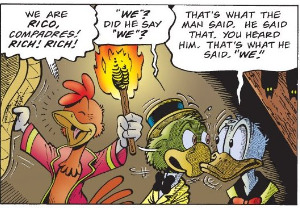
And he did ideed. In a nice moment that shows off his character, Panchito has no hesitation for sharing the wealth: He wouldn’t of got this far without his friends, and he wont get the Silver cashed in without their help. He also fires off his guns in celebration.. forgetting their in a cave, a gag I genuinely like.
After some off screen loading and hoisting, the boys are slowly on their way out of the canyon, with Donald’s Car and Senor Martinez pulling the cart with the silver together. With some downtime the three talk about what they’ll spend the money on.
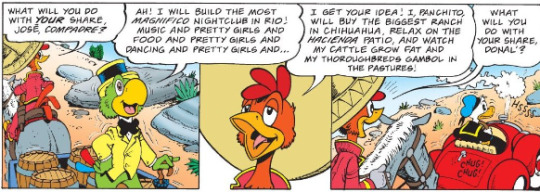
About what you’d expect. A big beautiful music venue

For Jose, and a nice ranch to retire at for Panchito. Both despite being wondering souls would love a simple place to call home, in their own personal styles. While they are BIG goals, their also likeable and understandable ones: Jose just wants to stop having to do all these tours and carouse and party and perform at home. Be his own boss, and live his own dreams instead of working for whoever will put up for him. Panchito just wants to retire from being a wondering hero to a peaceful life of farming, an honest reward he well earned. And Donald?
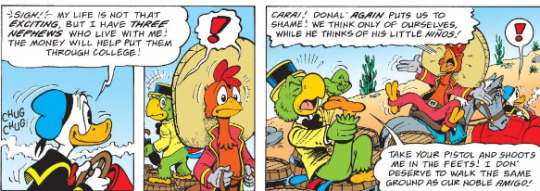
This is easily one of my faviorite moment’s of Rosa’s, one that really cuts to comic donald’s character: Sure he can be lazy, a trickster, hot tempered, and overconfident.. it’s why we love him.. but at the end of the day he genuinely loves those boys and their his first prority and I can see why the reboot took that trait and made it his defining one. They may annoy and frustrate them and he may pull a switch on them, 50′s after all.. but he loves his boys and knows they’ll do great one day and despite his spendthrift ways when given big money.. their all he can think about. Sure Donald probably has his own personal dreams, but instead of going big and retiring he’d probably just take only a small sliver of that money to open a humble hot dog stand or something, so he could have something of his own to provide them, while still giving most of the money to their college. Scrooge is who we all want to be.. Donald is who we are at our core: Flawed people who just want to do our best. It’s why I love the guy so much. The boys rest in the small town of El Divisadero, which like the town we started in is a real place, though both are much smaller, even as of 2000 when Rosa made his visit, so he had to embelish slightly. THey stop at a local watering hole only to find Alphonso. While Jose is naturally worried, Gold Hat has moved on to Panchito and wants to know why he’s here. However Donald thinking quickly says he’s part of their nightclub act, and we get a rousing version of the three cablleros, which when reading this I synched up to the song. I won’t put it here, as it’s too big for tumblr and it really works more as a whole, but needless to say, it’s the highlight of the comic. While Rosa did have doubts about putting a musical number in a comic, and it’s often trickey, he makes it work with the energy, vibrance and number of gags, that compensate for the music not being there. There’s tons of great gags, from Donald getting thrown out window, to the stone faced crowd who only cheers when Alphonso ends the number by whacking the three with one of their own guitars. Alphonso quickly realizes what’s goin on, finds the silver, and then hyjacks the train. The boys take off after him in the car, as Donald triumphantly states “The Three Cablleros Ride Again!”. The three head after Alphonzo, who finds them when trying to release the other cars to increase speed, and then shoots at them. It seems hopeless... until donald gets launched into the air, into a cactus then back into Alphonzo knocking his guns out in a great bit of slapstick. The Conductor, likely not knowing about the others or not carring, detaches the cars though, so our heroes and villian are now sent rocketing through the world’s most dangerous railway. Which, as you’d probably already figured out, is very real and what inspirited rosa to use this setting and thus indeed wind through dangerous mountainsides and over thin cliffs like a real life Donkey Kong Country level. Eduardo still has his machete though and easily beats Jose’s umbrella, but some more Donald slapstick and him apologizing to daisy about the senioritis as he wishes her goodbye seriously GET SOME COUPLE’S COUNSELING IF THAT EXISTS IN THE 50′S. It puls his sombrero down over his head, and with jose’s umbrella top landing on it, carries him off where he ends up in a lazy asshole sheirff’s jail for a gag. The boys however continue going back.. and the railway is unfinished at this time in history and while they save the silver, their fucked. But Donald has a plan, running to the back of the cars to get his car, and while it has trouble starting, Panchito throws some chilie’s in the tank to get it moving again. The boys find the silver.. but when one barrel spills they find out it’s not actual liquid silver.. but quicksilver, which was used for silver refinment. So while i’ts shiny, and toxic so of course Jose sticks his hand in before knowing what it is, it’s worthless. Probably. The boys.. all have a nice laugh over it. I love this moment. Sure the boys lost their dreams.. but like Scrooge, the three belivie theirs always another rainbow. What matters is the journey they had and the reunion that restored their friendship. Donald also muses the boys are smart enough to get their own scholarships anyway, so it’s no big loss.. but he does have to get back to Disvadero as the jamboree ends tonight and Jose agrees as he now needs a job again. The owner balks, understandably since Jose missed a performance to get laid and then disappeared overnight.. but the Hotel Owner is visiting so as long as he can provide a big act he’s good, and while Jose is worried as he already gave them his best, the boys naturally pitch in to be the cablleros once more. After all

So we close on Huey, Dewey and Louie returning, still worrying about donald, when they find him on stage. We then end on a truly heartwarming and great last few panels.
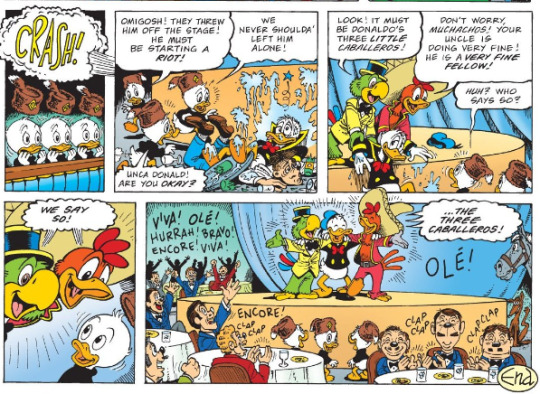
Final Thoughts: What else can I say? This story is beautifully drawn, as usual for Rosa, well paced, fun and really fleshes the Cabs out from the movie. It has a warm, fun adventurous tone and it’s nice to see Donald in the lead since Rosa usually did Scrooge stories and thus Donald was the justifiably surly sidekick instead of the main man> here he’s in the spotlight and gets to show just what he’s made of, while still being the hilarious mess we all know and love. The story honors the original film well, while forging it’s own path and is beautifully built into history. My only real complaints are the nephews being annoying, Alphonso’s somewhat overwrought accent, and of course the daisy gags.. but it’s all HEAVILY outweighed by one of Rosa’s finest hours and easy enough to ignore. Check this out if you can. It’s a classic for a reason.
If you liked this review, you can commission your own by messaging me on here or at my discord technicolormuk#655 for five dollars a comic story or animation episode. Whenever the ride resumes next, we’ll coming on down to the house of mouse to see the boys return to the screen. In the meantime keep an eye on this space for regular Ducktales reviews every Monday, including once this run ends as I intend to start playing catchup, loud house reviews whenever, my tom retrospective that’s returning soon, and my retrospective on the Life and Times of Scrooge McDuck, with chapter 2 of that also coming soon. Until then, there’s always another rainbow.
#the three caballeros#jose carioca#panchito pistoles#donald duck#don rosa#ride of the three caballeros#the three caballeros ride again#huey duck#dewey duck#louie duck#daisy duck#mexico#comics#reviews#elmo keep
50 notes
·
View notes
Text
The biggest post yet: Analyzing a multipage story
Before I begin, I like to thank every follower so far and the ones who helped me over the course of the last weeks to build this tumblr up. This is for you and in a way the first test run for future, hopefully more elaborate reviews of Dobson’s comics. Hope you enjoy it and learn something.
Without further ado, ladys, gentlemen and the colorful rianbow inbetween, I present the unpublished “So you are a cartoonist?” story about the King of Queens trying to become a comic artist

Okay, this is not quite right. What is going to happen is as followed:
A few years ago Dobson released via his patreon the unpublished sketches of a multipage comic story about the struggles of a webcomic artist by the name of Kevin James, with no relation to the famous comedian who as of recently is also playing a neo nazi in a supposedly pretty damn good home invasion movie.
What I want to do is now go through this comic and point out some of the flaws in the writing/progression, okay? Cause honestly, this is not going to be the worst thing Dobson ever published. But it unfortunately has more than a few little hiccups that show Dobson’s flaws when it comes to creating a story.
So off to the next pages


Now as you can see, it is pretty obvious that the story is heading into a direction where Kevin seems to be a down on his luck creator. Having to work at the blandest named Burger Joint since Good Burger, with discount Doctor Wily as his manager and getting pretty little money into his account. Seriously, only 206 $ plus? I don’t know much about minimum wage in the states, but are you really getting that little even after taxes have been accounted for? Or is it likely Kevin is pretty deep into the reds and his deposit was even putting it into the plus again. If so… yaiks.
And now we are getting into the pages where a few slight problems may show up, depending on your own interpretation of things.

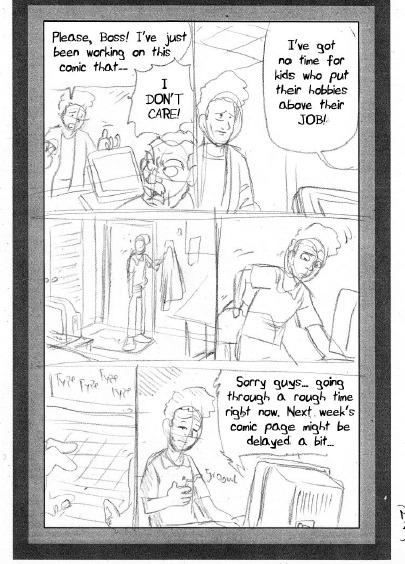
See, in my opinion it is obvious that we are meant to feel sorry for Kevin, cause he lost his minimum wage job now for simply being late. Something that can happen to all of us. And yeah, losing your job when you have not really much in the bank, that sucks. So I would wish for the character to get at least a new job soon. However, we also need to acknowledge that the manager is not in the wrong here. After all, Kevin supposedly has shown up late for work for some time and his excuse that he was late because he had to work on his comic is not reasonable. For a lack of a better word, making this comic is just his hobby, not his job. His job is to make burgers and sell them, because the manager of the burger joint is paying him for that. So excuse me if my sympathy is not that much with him

Not really much to say here. I just want to point out two things: One, the countdown that showed up also in previous pages and goes further down the longer we get into the story, two that it actually may be a good thing that Dobson has not drawn the copy shop employee in more detail. Cause one thing I came to realize over time with Dobson is, that often times his sketches have more of a softness to them than the final product, where e.g. faces are more harsher and frankly, uglier than they need to be, in addition to being a bit oversaturated thanks to the colors. And with Dobson’s tendency to make also angry faces genuinely spiteful, I wonder if the copy shop owner would have come off in the final product as more “strawman mean” than necessary. Cause it is very obvious that “poor Kevin” seems to suffer from the indifferences of his environment.

One month since he was fired and one more month till we are in the present and he loses his electricity cause he has not paid his bills. And this is where I slightly start to lose my sympathy with the character. Again, it is obvious that the story wants us to feel bad for Kevin because he is down on his luck although all he wants to do is just create his comic.
But at the same time, only halfway through the comic I have to ask, how much of his shitty situation is not just him doing nothing against it?
I mean, he has obvious money issues, he can’t pay the electricity bill and he has been fired a month ago. Shouldn’t he at this point not have attempted yet to get a replacement job? Or ask for unemployment support? Do commission work for fans in exchange for money?
I am just saying, his woes become a bit less relatable if he does not really attempt to at least try and fix the situation.
And unfortunately, this development continues still
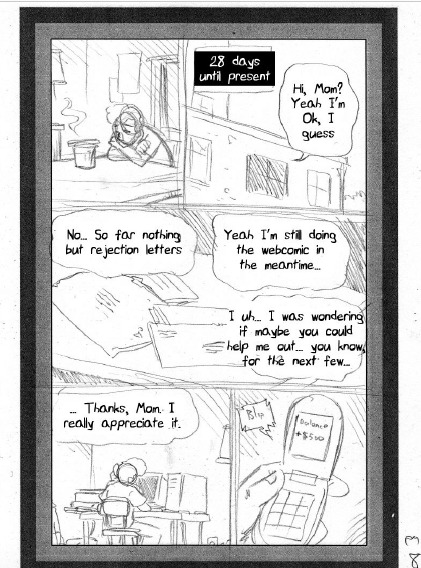
Gesh, this comic is really old when Kevin still owns a flip phone…
Also, I need to give his mom credit. 500$ send to her son so that he can pay his debts off and live well enough for a few days. Sorry, but 500$ is actually enough for me to live for a month and pay my groceries and major bills if I am careful enough. Lets hope Kevin is the same and that he looks out for a job



… nope, he does not look for a job. Two weeks after he got the money he still does not have a job to support himself and assure he has a roof over his head. In fact, he likely loses more money than he necessarily needs to by going to a diner.
Look, unlike other characters created by Dobson, I really do not hate Kevin. Primarily because he does not show any of the despicable or idiotic traits other characters by him do. But Kevin is not doing anything to improve his situation, period. And that is not really how you should write “down on their luck” characters, cause that doesn’t really make them sympathetic. The sympathy a reader gives those characters stems primarily from the fact, that though they really try their best, fate is not working into their favor for different reasons beyond their control. But here the problem is, that Kevin has to a certain degree control over his situation. He can decide what he wants to do with the money, he can decide to either do or not do anything to improve his situation at least slightly. And he doesn’t do anything.
Dear lord, Kevin is essentially Dobson when it comes to the laters overall situation and how he does little to improve anything when he is stuck.
Then there is also the entire thing about the waitress calling Kevin’s work amazing. For starters, I kinda doubt that that in our modern day society and work environment her acting like that in front of a customer, even if the customer does not mind, would fly with her employer. After all, professionalism and all that. Next, her praise feels shallow. The typical cardboard speech praise checkmark lines you can give to any piece of work, that don’t really mean anything if you do not elaborate on what it really is you find amazing about the characters in terms of personality or what it is about the story that hits home (e.g. can you realte to the characters, are you genuinely thinking the story is funny etc)
In fact, what even is Kevin’s comic?
I get that his work is not the center stage of this story, but think about it: we are supposed to think that Kevin is talented and that he needs his lucky break. But would his work even justify success and admiration? All we know is that the comic features a character called Kat (not really an original name) who for a lack of a better word and based on the sketch outline may just be the bastard offspring of Bubsy and Talus from Alex ze Pirate. And that is it. For all I know, and taking for shit and giggles a made up meta narrative into account, his work may actually be on the same level as Alex ze Pirate itself. And if that is the case, let me just fill out an application as janitor for Kevin right now. If he is lucky he can make around 1000 dollars a month soon.
This right here is actually a prime example of a common problem in Dobson’s longer story: Him breaking the old rule of “show, don’t tell”. The narrative tells us e.g. via the words of the waitress and the fact he has fans, that Kevin is a good cartoonist. But we do not see it for ourselves. And I am not suggesting here Dobson should draw 20 additional pages of Kevin’s creations and comics, because that would be freaking overkill. But imagine if this comic started off with the first page being part of a a very fantastic fight scene or story. Something rich in color and characters. Only for it to be revealed in the next page to be actually NOT the story we are supposed to read, but something Kevin creates right now. By doing so Dobson could not only show for the actual main story that Kevin is justified in having success, Dobson could have also shown for himself how he can be imaginative. How he can toy with tropes and expectations, while also creating something “new” out of nowhere just for fun. But that is not what we got. And all we have now are four more pages.
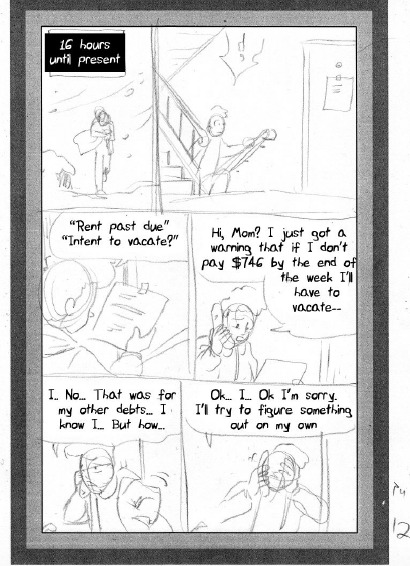
Again, ONE MORE WEEK passed and he still did not get a job. And in fact, he is also overdue on his rent and wants to ask his mother AGAIN for money.
Dude… I am all out of sympathy. Sell your freaking kidney for all I care, offer your landlord oral sex or that you are going to do work around the house for him, just try to do something except beg mother to help you out again. Especially as she has already send you 500 dollar. What have you done with that money anyway? Did most of it get spend on your electric bill? If so, how huge was it? And did you fail to pay rent for a couple of months now that even your landlord is having enough? I ask the later in part because I genuinely do not know how fast a landlord can vacate you in the US. See, where I live you can get vacated too when you don’t pay up, but most landlords are by law forced to at least let you stay for a few more weeks till you either find a way to pay up or another place to live. Forceful removal of a tenant can mostly only happen if the person causes severe damage to the apartment or is facing criminal charges.
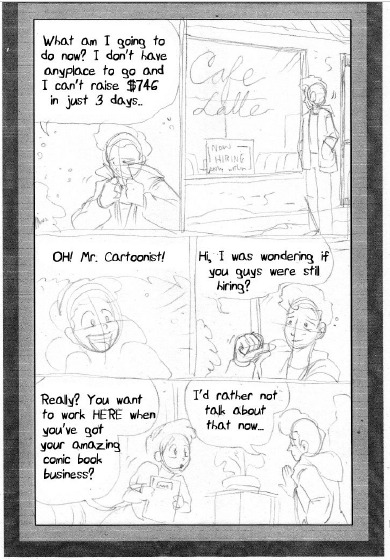
So NOW you are looking for a job. Good luck getting 700 dollars in three days though. I can’t imagine that even if you get hired, that anyone will pay up that amount of money upfront to help you. Again, do you have no other options, Kevin? Also, for how long was that sign up there? How often have you gone by that diner? Also dear lord, the waitress really is not the smartest if she thinks being a webcomic artist pays all the bills

So if the manager has already found someone, even if it was “just” now, why was the “now hiring” sign even still in the window? And he assumes there are even more bills? Kevin… do you have a genuine problem when it comes to handling finances? Would you do better, if you only get an allowance? Just one more page. And with it my biggest complains
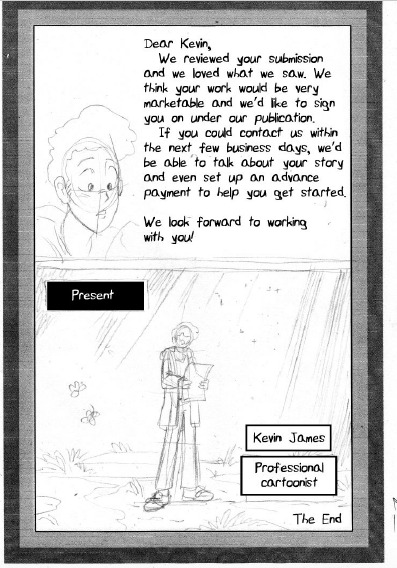
And so our comic ends with all the build up of how down on his luck Kevin is, being essentially pointless, because at the end of the day he is still lucky and all his problems get resolved not by his own doing but by deus ex machina.
Okay, this is not entirely accurate.
After all, Kevin DID create this comic. He wrote it, he drew it, he send the script to multiple publishers, he got rejected multiple times and now he is also going to finally get recognition for it all. You can say he worked to get his foot into the industry. The problem is, that none of that work is really shown in the story presented to us. We do not see him work on the script, potentially rewrite or fix up mistakes, get the impression that even with the bad situation he is in, he still wants at the very least this passion project to succeed. All we know is he worked on something and now because it is convenient for the story, his misfortune is going to end and he gets a happy end that is way too convenient for my taste.
Look, I know nothing about how publishers work. If someone reads this and has genuine experience in how publishers approach you if they are interested in your work and how much money you can really make through it, you are free to tell me what you know or have experienced directly or indirectly. Cause frankly, I find it hard to believe that any publisher would immediately do the thing Kevin now experiences here. First off, why would they not attempt to call him or get into a more convenient contact with him than the mail? Second, advanced payment? Shouldn’t you at least try to handle out basic deals before you send him a paycheck over?
I get it is supposed to be a happy end for Kevin here, but honestly, with the way how even if people are getting published, success may not be immediate or not to a degree Dobson actually hopes for. Sorry, but I am also just jaded enough as a person to know that even otherwise acclaimed work does take time to really hit a certain level of popularity. Luke Pearson e.g., wrote and drew the first volume of the comic series Hilda in 2010, just a few months after he finished college. The comic was a success and resulted in him publishing up to four more books till 2016. But only with his comic being adapted into a Netflix series in 2018 did he also get recognition outside of Great Britain, from which he is likely going to make enough money to have a comfortable life for the next couple of years. Mind you, I said comfortable, not “luxurious”. Cause this is actually one thing I fear with Dobson to a degree: That he thinks that being a successful comic creator equals also becoming stinking rich. Cause as far as I know, this is not really the case for many comic creators around the world. But I digress.
This post is not about the potential delusions of Dobson when it comes to how much of a fortune he could make through a successful publication, this post is about judging a SYAC story that got never published.
And frankly, the story of Kevin James… I don’t hate it. Honestly, I think there is potential for a decent, even longer story about a webcomic artist trying to get his big break. The problem is, this is not a story about the challenges Kevin faces in creating his comic. This is not the story about someone being determined to get his work out, even if he struggles in real life. This is not the story of someone facing and dealing with his real life struggles in a mature way, making the happy end all the more feel rightfully earned. This is a story where honestly there would be no drama at all (or at least less drama), if Kevin even attempted to do something halfway logical most other people in real life would do, if they found themselves in his situation (like looking for a job, trying to work commissions etc.) . And a drama where the dramatic event would not happen if some basic logic even a kid can think off would be applied, is at least for me not really a drama.
So yeah, it is not the worst thing by Dobson, but it is very flawed to say the least.
#so you are a cartoonist#syac#andrew dobson#storytime#comic review#webcomics#comics#multi page#criticism
48 notes
·
View notes
Text
Today’s post will be the tale of a royal exit written by guest poster Simone T. Whitlow from the blog History and Imagination. Whitlow discusses and tells the life story of Princess Sophia Dorothea and her exiting the royal family. The consequences were enormous. it is a story filled with an unhappy marriage and daring escapes.

I have taken a few shots at writing it under the auspices of a whodunit, but I don’t think there’s any doubt who the murderers are. I then had another run – this time as a faux fairytale, an OG soap opera? I had a line from John Wilmott, Earl of Rochester kicking round in my head about his patron Charles II, and thought what about riffing off that; this is an example of what a crazy, swinging place Europe’s courts were in the late 17th Century after all… but I abandoned all of these.
Then Megxit happened; The Sussexes – Harry and Meghan – announced they were leaving ‘the firm’. In some quarters there was shock, and I understand there was an urgent family meeting. Harry didn’t get thrown into a cell in the Tower of London. There was no clandestine dash for the English channel (like the aforementioned Charles II after his defeat at the Battle of Worcester in 1651). No disguising himself as a servant. No hiding in oak trees. Public discourse re-centred on whether you wished them well, or thought them a pair of spoilt brats. This brought me back round to this tale again… Imagine you’re a deeply unhappy royal, but it is 1694. Does Sophxit play out any differently?
This tale begins on the evening of July 1st, 1694. The setting, Hanover – a Germanic Duchy which would eventually be subsumed into a larger German nation, and whose first family would go on to be kind of a big deal. A young man, aided only by moonlight, sails along the Leine river till he reaches the Leineschloss – the palatial riverside home of the duke and his family. He moors his boat, then cautiously enters the property. The man is Phillipp Christoph, Count Konigsmarck – an aristocratic German born Swede from a long line of mercenaries. His father had served King Gustav II Adolph in the 30 Years War, rising through the ranks to Field Marshall. Phillipp himself had fought the Turks for Holy Roman Emperor Leopold I. At this point in the tale however, he was under the employ of the Elector of Saxony. Tonight he’s been summoned to met his paramour – Sophia Dorothea, princess of Celle – the very unhappy wife of Duke George Ludwig.

Count Konigsmarck
Princess Sophia Dorothea
Duke Georg Ludwig
Sophia, though surprised- she never summoned him – is ecstatic over his arrival. They haven’t seen each other for weeks. She is also a little perturbed and angered at ‘that woman’s’ gall. “Well, clearly she’s still spying on us” I imagine one saying ���Never mind, in a day we’ll be out of this nightmare” the other may have replied. With rather less poetic license you can imagine the rest of their night – Konigsmarck had not come to play solitaire after all, nor Sophia to play old maid. I like to imagine Sophia enfolding the count in her arms as he left and whispering “keep safe, hell hath no fury and all” but that is a little anachronistic – Congreve would not publish ‘The Mourning Bride’ till 1697. This is the last time Sophia Dorothea would see Count Konigsmarck – in the following hours he would disappear from the face of the Earth, never to be seen again.
Joining ‘The Firm’.
To explain how Sophia Dorothea found herself in an unhappy marriage, I need to take us back a generation. The first fact worth knowing is there was no German nation in the modern sense until January 1871. People could be ethnically Germanic, but Germany was a collection of feudal states for most of it’s history. Until 1806, they were also overseen by a ‘Holy Roman Emperor’. From 1346 the Emperor was elected by a council from the Elector states – This is important to know later. The second fact is marriages of convenience were very much a thing in the 17th Century, particularly among the aristocrats. Third, this tale concerns two duchies, Brunswick- Celle and Brunswick- Luneberg, afterwards known simply as ‘Hanover’. These duchies were ruled over by two brothers. Fourth their leading citizens of the duchies wanted to see the two areas reunited one day. Now that is out of the way…
Sophia Dorothea’s father was a man named Duke Georg Wilhelm of Brunswick- Celle. Georg W had been engaged to a princess from the neighboring duchy of Rhineland Palatinate (her name was also Sophia, though she hardly gets a mention beyond this point), but he was desperate to stay a bachelor a little longer. He cancelled the engagement – passing her on to his brother, Ernst August, Duke of Brunswick Luneberg. The leading figures of Georg W’s duchy were furious, but when Georg signed a legal agreement stating he would never marry – and would pass his duchy to Ernst, (merging the duchies) on his death, all was forgiven. Georg was not exactly out of the firm, but was free to enjoy his newly acquired freedom. The problem was Cupid laid Georg W low after he crossed paths with the beautiful Frenchwoman Eleonore d’Olbreuse.
Georg immediately knew they must marry and start a family. His own duchy and brother Ernst were unimpressed, so Georg W approached Leopold I, Holy Roman Emperor for permission to marry Eleonore. Leopold gave his blessing, but many years after the fact– at this stage Georg and Eleonore had a child, Sophia Dorothea, now 10 years old. There was a caveat to Leopold’s blessing – Georg W had a daughter, Ernst a son (Georg L) – the two cousins would marry, uniting the duchies. This suited all, but the two cousins themselves, who detested each other.
#gallery-0-6 { margin: auto; } #gallery-0-6 .gallery-item { float: left; margin-top: 10px; text-align: center; width: 25%; } #gallery-0-6 img { border: 2px solid #cfcfcf; } #gallery-0-6 .gallery-caption { margin-left: 0; } /* see gallery_shortcode() in wp-includes/media.php */
Georg Wilhelm
Eleonore d’Olbreuse.
Ernst August
Sophia Of Hanover
Complicating matters further, both Georg L and his father Ernst were openly having affairs outside of their marriages. Given what transpires it is worth mentioning Georg L’s double standards with affairs. The key fact to take on however is Ernst, Sophia’s uncle-stepdad, was involved with a lady named Countess Platen.
The Konigsmarck brothers.
We’ll come back to this lot in a second, but first let’s discuss Count Konigsmarck. He has quite a fraught backstory too. Konigsmarck was brought up at court, and knew the rest of this cast well. Both he and his brother, Karl, were sent to England in their mid teens, around 1680. They were sent off to learn courtly skills and mingle, but both brothers soon got into trouble. Phillipp’s trouble involved losing huge sums of money through gambling. Karl’s trouble was on a whole other level.
The two brothers began associating with several high society Britons- including Charles II. Karl had become smitten with Elizabeth Seymour, Duchess of Somerset. Elizabeth was – you guessed it – caught in a loveless, arranged marriage to a wealthy, cheating husband – the wealthy landowner and MP Thomas Thynne. On 12th February 1682, Thynne was travelling in a carriage through Pall Mall, when three men with pistols – Christopher Vratz, John Stern and George Borosky gunned him down. The three men were captured, and named Karl Konigsmarck as the man who hired them to make the hit. The assassins would hang, Karl walked free – but both young men were outcasts in England from this point on. Both returned to Europe and joined Leopold’s army. Karl would be killed in action fighting the Turks in Greece in 1686. As an aside, not long after Thomas Thynne’s murder, a poem circulated through London.
“Here lies Tom Thynne of Longleat Hall Who ne’er would have miscarried; Had he married the woman he slept withal Or slept with the woman he married.”
Let the Dangerous Liaisons begin.
In 1688, after eight years service in the wars with the Turks, Phillipp Konigsmarck returned to the court of what was then Hanover. The ladies of the court fell for this dashing, young soldier. He became a close friend and confidant of Sophia Dorothea – a sympathetic ear who would keep tales of Sophia’s horrible husband, hideous uncle/stepdad, and terrifying mistress of uncle/stepdad – Countess Platen, confidential. Konigsmarck also began an ill advised affair with Countess Platen himself.
The young count soon realized; one, he had fallen in love with princess Sophia – and two, Countess Platen is a dangerous lunatic he should have never become involved with. He took on a new military commission and left Hanover, hoping the countess would forget about him.
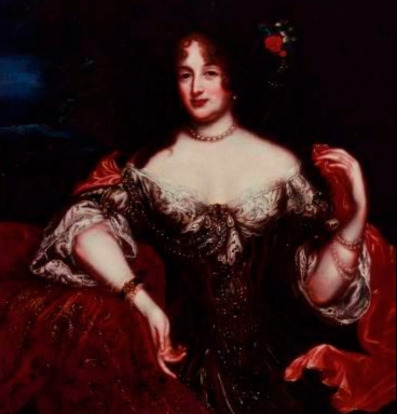
On his return to the court in the spring of 1690 he began wooing the princess. The countess, meanwhile resumed her wooing of the count. When left unrequited she hired spies to follow the couple, and intercept their letters. By 1693 Countess Platen stopped even attempting to repair the broken seals on the couple’s love letters. Phillipp resumed his affair with the countess, hoping to placate her; at the very least to stop her from spilling the beans on them. Phillipp and Sophia make the decision to run away together; to start a new life elsewhere- far away from courtly life. This presented a problem for the two. Phillipp was lousy with money, and currently broke – he had not been working, while wooing two ladies. Sophia, upon marrying Georg L, ceded all her possessions to her husband.
Phillipp took a commission with the elector of Saxony, in Dresden in May 1694. Sophia sat tight and waited for Phillipp to make some money. 1st July, at the urging of a counterfeit letter, Phillipp returned to Hanover. Possibly aware it was a trap, Phillipp had saved a month’s worth of wages. Most of the court were away at their summer house at the time – Georg. L included. Tomorrow morning they would run away – and begin a new, happier life together. The following day Count Konigsmarck was nowhere to be found. A distraught Sophia Dorothea eventually hears the scuttlebutt from the markets “the witches of Dresden…” lured Phillipp away.
So…. what happened?
Let’s work through the facts – and suppositions – of the case. There are at least five possibilities. It’s generally accepted the counterfeit letter came from the countess. She had spies watching the couple, who reported to her that the couple were planning to abscond the following day. It is established fact also that Countess Platen informed her other lover, the uncle/stepdad Ernst, of the two lovers’ plan. Ernst ordered four cavaliers to arrest Count Konigsmarck immediately. The four men caught him outside the palace, swords were drawn. When the men eventually faced trial they claimed the count had drawn his sword, a fight broke out, and the count got stabbed to death in the melee.
What happened to the body? Who the hell knows? That is the real mystery. The four suspects were never on record on this matter. One theory has his body thrown into the Leine river, or immolated, or buried on the property. There was excitement in 2016 when bones were dug up on the site, but DNA proved the bones belonged to five separate men (none Phillipp) and a selection of animals.
Possibility one is simple as this, manslaughter. Count Konigsmarck, the battle hardened soldier of fortune thought he could fight his way out of an awkward situation and the four men got the better of him. It was, at most, a case of manslaughter.
Two, when Ernst August sent the cavaliers out to stop Konigsmarck, did he give the order to murder him before the elopement uncovered his dalliances, causing him embarrassment? He may have wanted him out of the way for this reason. Besides personal embarrassment, Hanover had only just been appointed an elector state, who help choose the Holy Roman Emperor. A scandal involving their royals may have jeopardized that position.
Three, well that ‘hell hath no fury’ motive is also out there. Countess Platen was jealous, and involved in high level stalking behaviour. She had laid this trap for the couple, does it not make sense to go that one step further. Did she kill Count Konigsmarck, solipsisticly to say ‘if I can’t have him, no-one can’?
Four, did Georg Ludwig know of the affair, and order the assassination? An elopement certainly would have left him a cuckold. Working counter to this, Georg L seemed unaware of the affair till after the affair was exposed. As soon as he heard, he divorced Sophia Dorothea. He exiled her to house arrest in Ahlden Castle, another family possession. She was kept prisoner until her death 32 years later. Here’s my reason to doubt Georg as the mastermind – he divorced and imprisoned her six months after Count Konigsmarck disappeared. Perhaps Georg was an endlessly patient man? I doubt it.
Now, I want to put a fifth suspect on the table – I said I would not mention her again – but I need to in order to tie this to the Sussexes at the very least. Ernst August’s wife, Sophia the elder, scorned by Georg W, and in what one would imagine as unhappy a marriage as anyone else in this tale – Her husband was cheating on her with Countess Platen after all – well she had a dream.
Discontent with her lot in life, married to a petty duke of a tiny duchy, she daydreamed of a time when herself, or her son would run the larger archipelago to the north-west. This did not seem such a crazy daydream. Her grandfather had been James I of England. In 1685 Charles II died leaving 14 illegitimate children, but no heirs. The crown passed to his brother James II, who was deposed in the ‘Glorious Rebellion’ of 1688. This saw a joint rule by James II’s daughter Mary, and the Dutch Import William of Orange. The line of succession had gotten a little complicated of late, and Sophia the elder’s daydream was seeming less and less blue sky thinking, more a genuine possibility – just so long as a giant scandal didn’t break out about her cheating husband, cheating daughter in law, and surrounding rogues gallery. I can’t count her in, but I certainly can’t ignore she too has a motive.
By 1702 both Mary and William of Orange had died. The crown passed to Mary’s sister – Anne. Anne fell pregnant 18 times – and suffered six miscarriages, five stillbirths, and none of her remaining children lived beyond two years of age. When Anne died on August 1st 1714, the crown passed to one Georg Ludwig, of an obscure German duchy, henceforth known as George I of England, whose family sit on the throne of England to this day.
How do I feel about the Sussexes and Megxit? Well, I am glad for the couple that it is 2020, not 1694 – and I wish them well.
ABOUT THE AUTHOR

Simone T. Whitlow is a musician, history blogger, and occasionally a squeaky wheel, working for well oiled corporate machines. Simone is based in Auckland, New Zealand and writes most weeks for Tales of History and Imagination.Tales of History and Imagination is a collection of strange and eccentric stories from our collective past. From Victorian Boogeymen to forgotten wars in far flung nations, mysterious super-weapons to people who simply took a path less traveled – Tales of History and Imagination is a compendium of the stories never told in history class.
FOLLOW SIMON T. WHITLOW:
WEBSITE: https://historyandimagination.com/
FACEBOOK: https://www.facebook.com/Talesofhistoryandimagination/
TWITTER: https://twitter.com/TalesofHistory1
PINTEREST: https://www.pinterest.nz/simonewhitlow/tales-of-history-and-imagination
The Deadly Sophxit of Count Konigsmarck and Princess Sophia Dorothea Today's post will be the tale of a royal exit written by guest poster Simone T. Whitlow from the blog…
1 note
·
View note
Text
The “My Top Films of 2018″ post positively no-one has been crying out for
Hi friends, it’s been a while. I’ve been meaning to do a little monthly film round up / review thing for a while now (A suggested enterprise that I should say I have received specific encouragement for) but it felt a bit weird starting in the middle of the year so maybe consider this a warm up for that. I HATE spoilers so rarely read any kind of detailed review for anything I feel inclined to see until after I’ve watched it, so the usual format here will be a sentence whether you should bother to go see a film, a few films that might have a similar feel of characteristics if you’re still undecided or looking for more of the same, and finally I might give some extra details or specific opinion. If you’re a spoiler pedant like me you might want to skip this last part but I imagine most of you will be OK.
As what follows are what I consider the best films of the year, it should be a given that I suggest you seek them out and watch them. If you can’t be arsed with or don’t want the details and discussion, of which there’s a lot below, skip down; I’ll put the list near the bottom, along with a selection of other highlights that didn’t make the cut.
Anyway, onto the business at hand. To qualify for my long-list films had to be new releases that I’ve seen in a cinema this year. I’ve not counted any Netflix or Amazon fare, or any classics, some of which obviously are some of the best films I’ve seen in the cinema this year, but you shouldn’t really need specific encouragement to go see Rear Window, Once Upon a Time In The West or The Apartment if you get the chance. I did have a solid 10, but had forgotten something important, so you’re getting a top 11 and a best of the rest section instead.
11 (also 10)
- You Were Never Really Here (Lynne Ramsay)
- A Woman’s Life (Stéphane Brizé)
Two very different films share 10th place. You Were Never Really Here is a bruising tale of a damaged person not so much seeking redemption as just getting by. Set in contemporary New York, it features a superb central performance from Joachin Phoenix and is beautifully shot by Lynne Ramsay. Has a similarly feel, in terms of the editing at least, to her earlier film We Need To Talk About Kevin. There was a lot of talk about this being a modern day Taxi Driver which is an understandable comparison given the subject matter but might unfairly raise expectations if you’re not careful; it isn’t and it isn’t trying to be. It does however have a bit of a Paul Schrader feel to it so if you enjoyed First Reformed this would be worth a look. Currently on Amazon Prime, if you’re not boycotting Bezos.
A Woman’s Life I saw pretty much solely on the strength of how much I liked Stéphane Brizé’s previous film, The Measure of A Man which covers similar territory to I, Daniel Blake but with considerably more subtlety and sharper focus and is for me more successful for it. An adaptation of Guy de Maupassant first novel, Une Vie, the story as the title suggests, takes you through the life of a woman in 19th Century France. It‘s a slow, measured and intelligent film, sympathetic, naturalistic and moving and slyly shines light on the inherent cruelty of the pervasive limitations of the patriarchal society of the time. Not sure what to recommend for comparison since it was early in the year I saw it and I don’t think I’ve seen much else like it. If you’re a fan of Bresson give it a look. If you enjoyed Jacques Rivette’s The Nun maybe. If you liked Barry Lyndon but think it needs toning down in terms of flair and mood. Tolstoy was a big fan of the novel if that floats your boat, Mostly I’d say watch Measure of a Man and maybe track this down if you liked that.
9
Let The Corpses Tan (Hélène Cattet, Bruno Forzani)
From the Brussel-based French duo behind Amer and The Strange Colour of Your Body’s Tears, if you’ve seen either of their earlier films you’ll have some idea of what you’re getting here. It’s not going to be to everyone’s tastes; if you want a straightforward plot, narrative resolution or ultimately to fully understand what the fuck is going on, you’re in the wrong place, but if you like the sound of a pristinely crafted and gorgeously shot amalgamation of spaghetti western and Poliziotteschi aesthetics, this is likely very much up your street. If you liked Mandy as a film that is effectively an homage to the mood a variety of 80′s films, I think this does similar for a different period more smoothly. If you’re not sold by now I’m not sure what else to say but you can watch it on Amazon Prime if you’re curious.
8
Lucky (John Carroll Lynch)
On paper this shouldn’t be as good as it is. Not a lot really happens. It’s competently shot but not visually exceptional. It would seem to unashamedly be a vehicle to showcase the enduring charm of Harry Dean Stanton in a role that I would be astonished if i were to discovery it wasn’t written specifically for him. And yet it’s HUGELY endearing. It’s sweet without ever approaching being mawkish or saccharine. Stanton is an irascible, charming and poignant delight as a man doing his best to defiantly maintain his independence while coming to terms with his encroaching mortality . David Lynch is less convincing as a man bereft after his tortoise has escaped from the garden, yet still it all kinda works and has context. If you’ve liked Harry Dean Stanton in anything else, but particularly Paris, Texas. You’ll likely enjoy this. If you’re a Twin Peaks geek, liked The Straight Story, St Vincent (As in the 2014 Bill Murray movie), Mystery Train or maybe even On Golden Pond you’ll likely be OK too.
7
Filmworker (Tony Zierra)
You’d be forgiven for not knowing who Leon Vitali, the subject of this film, is. Some of you with better memories may place him as the actor who portrayed Lord Bullingdon in Barry Lyndon, likely because at some point you’ve looked him up after watching his superb performance wondering whatever happened to him. What you’re unlikely to be aware of (unless you’ve already seen this) is his immense contribution to, and sacrifices for, the work of Stanley Kubrick, an ongoing commitment that will likely persist until his dying breath.
In awe of the auteur on the set of Barry Lyndon, he effectively abandoned his acting career at the moment it was set to take off, to work with Kubrick in whatever capacity he could, over time becoming his most trusted, and woefully overworked, assistant. There is a sense that this a tale of one man being exploited in another man’s ruthless pursuit of their vision, which in part it is, but Vitali’s devotion is effectively religious and so he commands more respect and admiration than pity for the extent he has given over his life to his passion. If you like Kubrick, have seen and loved any on his films at the cinema, on video, DVD or blu-ray you have a responsibility to see this, because it is extremely likely that Leon is the man who has personally checked the prints and colour gradings to ensure they are precisely as they should be. It should also be a reminder that there are hundreds of thousands of others unsung who’ve had a hand in making the films you love.
If you’re a film geek, serious cineaste or fan of any of Kubrick films but particularly the last four (Barry Lyndon, The Shining, Full Metal Jacket, Eyes Wide Shut), you should see this.
6
Lady Bird (Greta Gerwig)
At heart Lady Bird is a simple story, very well told. It has suitable faith in its script to keep things simple and in doing so delivers 95 breezily delightful minutes of cinema. I saw this immediately after having endured The Shape of Water (Superficial, predictable, indulgent, emotionally-manipulative dross, with some insultingly shallow politics shoe-horned in to bolster its credibility) so the contrast may have inflated my enjoyment but after that, this was a breath of fresh air. It has a lean, clever script flawlessly delivered by it’s stellar cast, led by primarily by the equally excellent Saoirse Ronan and Laurie Metcalf but also featuring Timotheé Chalamet and the reliably remarkable / remarkably reliable Lucas Hedges in supporting roles. The result is a film full of well-rounded, flawed and relatable characters. The depiction of teenagers seem particularly sharp; the traumas of negotiating the trials of burgeoning adulthood are treated sympathetically but you’re also shown achingly absurd moments of pretension that’ll likely spark a pang of amused recognition in anyone over 20.
If you liked 20th Century Women or Greta Gerwig’s other cinematic outings (I don’t think I’ve actually seen many others but it stands to reason.) you’ll likely get a kick out of this not really sure what else compares suitably.
It’s a nice film. Give it a go if you haven’t already.
5
Phantom Thread (Paul Thomas Anderson)
The latest offering from Paul Thomas Anderson, Phantom Thread is a curious creature and a bit of departure for the director, stylistically at least. On the surface a dry tale of a celebrated English tailor discovering a new muse and lover and the shifting of power and negotiation of compromises as their relationship develops, I’d say the real meat here is in the subtexts but I don’t want to prejudice your viewing with my half-baked theorising so I’ll say no more. Visually sumptuous, pristinely photographed and with a deliciously acerbic and quotably witty script, you also get a trio of marvellous performances from Daniel Day-Lewis, Leslie Manville and Vicky Krieps in the lead roles. A wry treat for all who like seductive subtlety at a steady pace and one that’s sure to benefit from repeat viewing. (I’ve yet to rewatch myself but am keen to and in the course of writing this list I’ve been compelled to bump it up a few spots and suspect it may well have faired better if I had)
If you’re a PTA fan you’ve likely already seen this but if you need specific prompting I’d say it’s closest in spirit to The Master, but it’s still more idiosyncratic among his output than similar to the others. If you like the barbed charm of the writing of the films of the British New Wave, or Pinter’s script for Losey’s The Servant you'll also likely find this worth your time.
4
Climax (Gaspar Noé)
Despite it's place here, I have a hard time recommending Climax. Watching it was possibly the most queasily unnerving experience I've ever had in a cinema, which is entirely it's intent.
Following the events that unfold one snowy evening at an isolated rehearsal hall where a group of dancers having a final night party fall victim to an LSD-spiked sangria, what starts out as a mesmerising display of dancing skill and exuberance slowly shifts into a hellish, decadent descent as innermost fears and desires surface and are enacted.
The film is technically spectacular, largely composed of a single twisting shot that woozily drifts among the action and skilfully approximates the helpless intoxication of the characters. Prior to this the film opens with a series of interviews with the dancers, shown on a tv flanked by videos and books, the theme of which would appear to be transgression in its various forms. It's a simple, smart device that foreshadows events to come but also lays out the story's influences and inspirations. The overall result is the sense that experience you receive has been carefully and precisely crafted, something all films obviously aim to do but that this actually delivers, extraordinarily well. Even when things slow and drag in the last 20 minutes (which they undeniably do) you feel like you're being made to endure the comedown of the preceding proceedings. It's not going to be for everyone and I'm not sure the visceral unease of seeing this in the cinema will translate to small screen viewing, but it's a brilliant affecting piece of cinema for those prepared to brave it.
If you didn't like Enter The Void, you're probably not going to like this but if you did, you probably will. The content isn't necessarily especially graphic but there's a sense of callous disregard and cruelty that made for uneasy viewing for me at least, similar to the darker moments of Henry Portrait of a Serial Killer or Man Bites Dog. You probably know by now if you're gonna watch it or not, so let's move on.
3
Utøya: July 22 (Erik Poppe)
Not to be confused with the Paul Greengrass Netflix film (Which went into production a year later than this then stole it’s working title) Utøya: July 22 is the second film on this list to centrally feature an extended tracking shot. This one was shot in one interrupted take and, much like Climax, is a harrowing film elevated by the directorial decisions that informed and shaped its creation.
Unfolding in real time the film shares the experience of Kaya, a teenage girl attending the summer camp on the Norwegian island of Utøya during the 2011 terrorist attack there. It’s a heartbreaking watch. Less generous reviews suggest it to be manipulative, others, which I am obviously moreso inclined to agree with, feel that the films choices place the victims in the forefront of the story and in doing so highlights failings within the usual handling of such events on film and more broadly in the media, failings which, while I haven’t seen it, I have heard the aforementioned Netflix film is guilty of. While the characters in this film are fictional, their stories are based on the testimonies of survivors and survivors were heavily consulted both during the writing of the script and the filming. The terrorist is not named and is only shown once in the distance which, given the intention of his murderous assault was to draw attention to himself and his toxic political views, is very effective at both resisting unwitting complicity in advancing these aims and preventing the victims and the horror of their experiences from being shifted into peripheral significance. They are not merely a notorious individuals tragic statistics and they, or any other victim of mass murder, should never be allowed to be seen in such terms. This film has been painstakingly and thoughtfully constructed to honour them and the gravitas of their suffering and is intelligent and powerful film that deserves far greater attention.
It feels somewhat ridiculous to offer comparative suggestions for this one; it’s not an enjoyable viewing experience, so if you’re not already moved to watch it maybe you shouldn’t bother. If you’re still undecided this does feature perhaps the most effective and emotionally involving uses of the single shot proximal viewpoint, a technique employed in a number of titles of recent years (Birdman, Victoria, The Revenant, Gravity etc.) that I’ve seen. It something which Son of Saul was celebrated for, where the intent was similarly a claustrophobic immersion, but which, in that instance, I found somewhat distracting. This succeeded for me where Son of Saul did not.
2
Cold War (Pawel Pawlikowski)
I still haven’t seen Pawlikowski’s previous film Ida but the strength of esteem that it garnered led me to see this without knowing anything about it. (And if you really want to enjoy it, you should skip the rest of this and do the same. Actually you should do that anyway, because I likely create an unreasonable high expectation by the end of this.)
The film covers a love story as it unfolds and transforms over the space of 20 years under the shadow of the Cold War. At various points the romance is frustrated either by the ubiquitous demands and expectations of the Soviet state apparatus or by the lovers diverging fates negotiating it. Given the tale is loosely based on the story of his own parents, one would be forgiven for fearing this might be a melodramatic tale of predictably plucky triumph, but the nuance and complexity of the central relationship, challenged as it is by not only external forces but internal conflicts, has a suitable quantity of bitterness and disappointment to feel like a truthful portrayal. It’s refreshingly unsentimental, as is the depiction of life under totalitarian rule and in some ways this is as much a film about the potential for lives to be crushed by oppressive regimes as it is about loves ability to resist them.
Also of note; the film is gorgeous. The black and white photography is pristine throughout and subtly shifts with the films location. The soundtrack comprises Eastern European folk and 50s Jazz and, with music forming a central role in the plot, the scenes where it features most heavily stand out and are at times breathtaking. The acting too is great with Joanna Kulig proving a particularly enchanting screen presence. It’s a manifoldly beautiful film.
If you still need persuading (though you really shouldn’t, because by this stage I’m just over-egging the pudding) if you liked Ida obviously this’ll be up your street, if you’re a Tarkovsky fan in general you’ll likely appreciate some of the framing and pacing here but if your especially fond of Ivan’s Childhood (And if you’re not you probably should be) the look and feel of this should prove particularly appealing.
1
Shoplifters (Hirokazu Kore-eda)
It’s unlikely that I’m alone in placing this at the top of my list. I don’t think I’ve spoken to anyone who hasn’t liked this film. Most have loved it. This is very rare. In fact, if you haven’t yet seen this, don’t bother reading further, just go see it in the cinema while you still have the chance. (I don’t want to hear any shit about spoilers or whinging about missing it.) If you’ve seen any of Kore-eda’s other recent films (with the possible exception of The Third Murder) you will have had some idea of what to expect with this. He is a master of tender, low-key tales of everyday life and the drama contained within. Our Little Sister was my first encounter with his work and was my favourite film of 2016. It features the intertwining lives of three sisters who live with their grandmother and the half-sister they effectively adopt when their estranged father dies. It’s a simple, wonderfully uplifting film that unceremoniously shows you the progressing lives of a loving family in rural Japan. After The Storm looks at another family, this time in Tokyo and more fractured and dysfunctional but still observed with compassion and though flawed, prove deeply sympathetic and relatable. In Shoplifters we are again presented with a family, this time a gathering of humble misfits and miscreants predominantly bonded by solidarity in the face of poverty, hardship and neglect. Their love for each other is evident in their actions but as the film progresses it is brought into question by figures of authority and more broadly a society that though unwilling to help them when in need is more than prepared to judge and condemn them regardless of their circumstances.
This is both an overtly political film and a deeply philosophical one but fundamentally it’s an achingly sensitive and compassionate drama. It brings to light rarely discussed economic disparity in Japan and the difficulties of those struggling to get by. It examines what constitutes a family and questions the value of traditional familial and societal bonds when they don’t encompass a duty of care. It lead you to reflect on you own fortunes compassion and morality. And it does all of this simply by presenting you with a group of characters with complex stories. Acts that might be considered otherwise outrageous are given suitable context to leave you entirely capable of empathising with the decisions to undertake them.
A devastatingly moving and humane film, this is beautifully shot, scripted, edited and brilliantly performed by a hugely talented cast. An irrefutable masterpiece. Must watch.
Right, below is a recap of the list then below that will be a list of notable highlights that made the long-list, for those of you not already bored shitless
IF
YOU
WERE
SKIPPING
TO
THE
END
YOU
CAN
STOP
SCROLLING
NOW
OK, welcome back slackers. Here’s the list.
10. - You Were Never Really Here (Lynne Ramsay)
- A Woman’s Life (Stéphane Brizé)
9. Let The Corpses Tan (Hélène Cattet, Bruno Forzani)
8. Lucky (John Carroll Lynch)
7. Filmworker (Tony Zierra)
6. Lady Bird (Greta Gerwig)
5. Phantom Thread (Paul Thomas Anderson)
4. Climax (Gaspar Noé)
3. Utøya: July 22 (Erik Poppe)
2. Cold War (Pawel Pawlikowski)
1. Shoplifters (Hirokazu Kore-eda)
And now for the best of the rest. You should maybe try to watch these before reading the details too
The Rider (Chloé Zhao)
This was unquestionable beautiful and does an excellent job of showing the limitations of investing in an outmoded code of masculinity, in this instance that of the cowboy. The amateur cast effectively play versions of themselves in the thinly disguised the story of lead actor Brady Jandreau’s struggles to adjust after a severe rodeo injury curtails his career and hopes. Why it’s not in my top 10: This is a cinematic love letter to Brady and while it’s effective in display the depth of the directors affection for him and his, admittedly very endearing, family, it’s less so as a means to convince you to share it’s viewpoint if, like me, you don’t share Chloe Zhao’s unquestioning sympathy from the outset. Questions about animal welfare, the validity of cowboy traditions, practices and iconography in the modern world and whether that imported culture dominating life on a Lakota reservation can ever be anything but a toxic cul-de-sac, all go unasked and unanswered.
The Wild Pear Tree (Nuri Bilge Ceylan)
This probably should be in my top ten. It’s absolutely spectacular. Beautifully naturalistic and expansive in scope and ambition. One regular customer at the cinema where I work said it authentically encapsulates the experiences of everyday Turkish life and so if that sounds up your street and you have a spare three and a bit hours to invest this is richly rewarding watch.
Why it’s not in my top 10: It’s just soooo long. It’s 188 minutes but feels like longer, which I’d actually say is a good thing because it covers so much ground at such a measured pace you’re surprised when it’s over that you’ve experienced so much in such a, relatively, short space of time. But it’s still exhausting. While lengthy discussions work within the context of the film their inclusion teeters on the brink of indulgence and the main character, a youthful and arrogant would-be intellectual, is frankly a bit of a dick, and that’s a long time to spend in the company of someone you don’t necessarily like. So in essence, while this is a masterpiece, it is a demanding one, and it’s because I found the physical experience of watching this to be more challenging than either enjoyable or invigorating that it slipped into the runners-up. Once Upon A Time in Anatolia, which I rewatched earlier this year, manages to cover similar territory but still leave you enlivened so I was hoping this might do the same.
Leave No Trace (Debra Granik)
A well-paced, great looking and emotive little drama featuring exceptional central performance from Thomasin McKenzie and the dependably compelling Ben Foster as a father and daughter living on the margins of society in contemporary America. Comparisons with with the work of Kelly Reichardt seem justified.
Why it’s not in my top 10: It’s a great film, I just personally think I saw at least 10 better ones this year. You might feel otherwise. (But you’d still be wrong)
The Miseducation of Cameron Post
I found this to be really sweet and engaging and similarly effective to Lady Bird in giving dignity and truth to the voices of youth. It felt a bit like a modern day update of a John Hughes film (but with the startling misogyny and casual racism excised obviously)
Why it’s not in my top 10: It’s good, but not that good.
Marlina the Murderer In Four Acts
Indonesian. Feminist. Western.
What more do you need to hear. A great little film that deserves a wider audience.
Why it’s not in my top 10: You’ve got the gist of this by now surely?
A Fantastic Woman
I think this did a really good job in highlighting the various forms of conspicuous everyday cruelty that hinder the lives of trans women and more broadly the harmful prejudices that nestle within normative society. The film is far from perfect and is not without it’s justifiable criticism; I have heard it said that this represents a CIS gendered persons idea of what trans experience is like rather than the reality and it is true that the central character is pretty much entirely defined by her victimhood rather this being a more nuanced portrait. So, yes, it’s maybe more than a little melodramatic but the central performance of Daniela Vega is i think still suitably engrossing to warrant your attention.
Why it’s not in my top 10: and nor are the films below
Faces / Places (Agnès Varda, JR)
This was a really lovely film. I tend to overuse the word charming (You’ll likely notice a bunch of equally overused synonyms of it where I’ve attempted to avoid doing so above.) but it’s really apt here. This is a delightfully playful look at the collaboration and friendship of it’s creators, filmmaking legend Agnes Varda and photographer/muralist JR as they travel around France making work. And that pretty much it. It’s smart, fun and funny but mostly it’s nice. Refreshingly and unashamedly pleasant.
This was one of 3 Agnès Varda films I saw in the cinema this year and I’m deeply disappointed both that I didn’t catch more but also that I’m so late in being introduced to her work. The other two I saw were Cleo From 5 to 7, a truly stunning piece of work that effortlessly makes many of it’s French New Wave contemporaries look painfully austere, and One Sings, The Other Doesn’t, whose first 5 minutes alone are so deliciously, guilefully political as to make this, and discovering Varda’s films in general, one of my highlights of the year.
While the ship has sailed for the folks of Manchester to catch the Gleaning Truths season, the lucky folk of London still have a chance to catch them all and suitable time to plan as they’re all showing in early 2019 at the Prince Charles Cinema. I heartily recommend you do so (or at the very least see Cleo From 5 to 7 then see how you go) Link here.
Lastly I want to mention a trio of horror films that stood out this year.
Hereditary was hokey, divisive and derivative of a bunch of late 70′s horror but had a great cast, some surprising twists and I found it to be a great deal of fun. Others did not. The choice is yours.
Mandy was a more maniacally entertaining treat, again derivative but as it’s effectively an adoring pastiche of 80′s genre films it can’t be judged too harshly on those terms. I still think Let The Corpses Tan covers similar territory better, but this has some spectacular visuals, a superb soundtrack and a gloriously unhinged Nicholas Cage to keep you amused along the way.
The new Halloween marked an entertaining return to for the long-suffering franchise and, pleasingly, a box office success but what I found most interesting about it were the sly touches in the screenplay that suggest changes may be afoot in Hollywood. The key protagonists are all women, they’re surrounded by a parade of shitty men who show themselves to be either abusive, untrustworthy or impotent when the time comes to face up to the embodiment of senseless murderous misogyny, Michael Myers. There was a similar vibe in Widows, and with both it was encouraging to see politics being injected into successful mainstream offerings. Lets hope it persist.
Celebrated films I haven’t seen that may be notably absent above:
I’ve heard good things about both Wajib and 120 BPM but haven’t seen them, so obviously can’t comment on them. Also I haven’t got around to watching Cuarón’s Roma yet. Or Sweet Country. I missed that one too.
Alternative facts
In the interest of fairness and balance and the spirit of sharing here’s an alternative top 10 from my learned colleagues at HOME: https://homemcr.org/article/top-10-films-of-2018-ushers-choice/
(Just because their reviews are more thorough and better written, it doesn’t make them right)
And a 2018 highlight podcast if you’re really keen:
https://homemcr.org/media/the-home-film-podcast-special-2018-round-up/
Things I’m looking forward to seeing next year:
The Favourite looks deliciously vicious and entirely up my street so I can’t wait to see that. Green Book I very much like the look of too and is an intriguing shift for Peter Farrelly that I hope pays off. I also have high hopes for If Beale Street Could Talk, like the sound of Destroyer, the look of Vice and am intrigued by Burning. Anyway that’s more than enough for now. I’m gonna go do something else. So should you. See you in the new year.
1 note
·
View note
Photo

MARGARET THATCHER’S TIMELINE
1925 - October 13: Margaret Hilda Roberts is born in Grantham, Lincolnshire
1943: Begins her degree in chemistry at Somerville College, Oxford.
1946- October: Elected as the first female president of the Oxford University Conservative Association.
1951- December 13: Marries divorced entrepreneur Denis Thatcher, becomes Mrs Margaret Thatcher. Her wedding dress is made of royal blue velvet.
1953- August 15: Twins Carol and Mark Thatcher are born.
1958- July 31: Selected as the Conservative candidate for Finchley.
1959- October 8: Elected as MP for Finchley.
1966- March 31: Labour win the general election. Thatcher moves to the shadow Treasury team under Iain Mcleod. Macleod
1967- October 10: Appointed to the Shadow Cabinet as shadow Fuel and Power spokesman.
1968: Votes to decriminalise homosexuality and legalize abortion.
1972- January: Unemployment passes 1 million and British troops kill 13 people in the ‘Bloody Sunday’ riots.
1975- February 11: Thatcher is elected as the Conservative leader on the second ballot and appoints her main contender, Willie Whitelaw, as her deputy. It is during this period that she begins to be influenced by economists such as Friedrich von Hayek and Milton Friedman, whose ideas would ultimately shape her monetary and industrial policies when in power.
1976 – January: In response to a withering attack on the Soviet Union she gave in a speech, the newspaper of the Russian defence ministry dubs her the “Iron Lady”. The name sticks.
1979- May 4: Thatcher becomes the country’s first ever female Prime Minister after winning the general election with a slim majority of 44 seats.
1989- April 1: The deeply unpopular poll tax is introduced in Scotland before the rest of the country.
1990- November 28: Thatcher resigns as prime minister and is replaced by Major.
1992- June 30: Thatcher enters the House of Lords as Baroness Thatcher.
1997: Thatcher backs William Hague who wins the Conservative party leadership. Labour goes on to win in a landslide election.
2012- January 6: Film ‘The Iron Lady’, starring Meryl Streep as Margaret Thatcher is released to mixed reviews.
Margareth Tatcher | The Iron Lady
· British Politician, longest of the 20th century. First woman.
· Responsible for economical en social policy ‘ tatcherism ‘.
· Died of a stroke
· “Thatcher is dood. Nu nog het Thatcherisme, maar dat is nog iets heel anders. Want het door haar staalharde opgedrongen neoliberalisme van deregulering, privatisering, afbouw van sociale voorzieningen en openbare diensten, van desindustrializering heeft niet alleen een materiële erfenis nagelaten, maar ook een maatschappelijke. De neoliberale redenering dat mensen zelf verantwoordelijk zijn voor hun situatie, is diep doorgedrongen ten koste van begrippen als solidariteit en streven naar meer gelijkheid.”
Personality
· Perseverance against all odds
· Aspire for academic brillianc
· Dream big. You only get one life
· Live up to your words
· Don’t get intimidated
· Conservative
· Dominant
Margaret Thatcher Fashion
The Hair : While running for election in 1979, Thatcher's hair had some semblance of life – at times, it even looked as though it moved. That all changed once she reached in power. Post-1979, the hair – like her – stayed fixed in place. Thatcher underwent a subtle, but noticeable, makeover. Gone were the brightly coloured shiftdresses of the late 70s as Thatcher gravitated towards suits. A year before the power-dressing 80s, she predated, and possibly contributed to, that fashion trend. Her hair did too. Swept back from her face, it was like a helmet – held together by several cans of hairspray that, one imagines, could stand the force of one of those famous four-hour snoozes or any fight with Arthur Scargill. A visit onboard the Falklands-bound HMS Hermes, however, proved too much. Pictured in 1982, her hair was, for once, less than helmet-like. This was a one-time-only occurrence. She made sure it didn't happen again.
The Pearl : Few things survived from Thatcher's pre-prime-ministerial wardrobe but pearls were an exception. Photographs from the 50s onwards show her wearing them – necklace and earrings – as the picture-perfect housewife. She even wore them for her wedding day in 1951, and apparently didn't take them off again. Recent pictures showed them still firmly in place, more than 60 years later. They make sense, of course. A twinset and pearls is the epitome of traditionalism – Thatcher may have dispensed with the knitwear (far too domestic, one suspects) but the pearls do their job handsomely. Expensive but not frivolous or decadent like diamonds (far too Elizabeth Taylor), they spoke of reliability. Seen as classic without being blingy, they fit into a look that wants to spell out reliability and no-nonsense conservatism. To put it another way, they're "this lady's not for turning" in a necklace.
The suit : Thatcher's style wasn't subtle – see her colour scheme. The Duchess of Cambridge wore a tennis outfit to watch Wimbledon (geddit?), and Thatcher could be accused of matching her for literalness long ago. For her first day as prime minister, she sartorially demonstrated that the Conservatives were back in the most obvious way; she wore Tory blue from head to toe, with a boxy jacket and matching skirt. A somewhat clumsy symbol, but it was one she liked. She was back in blue recently, meeting David Cameron in a shiny knee-length coatdress for their dinner at the Goring Hotel in 2011. Notably, Thatcher's allegiance to the colour wavered for her resignation speech in 1990. Foreshadowing Labour's dominance under Tony Blair seven years later, and perhaps hinting at her feelings about the events that took her out of office, her suit and lipstick were both blood-red.
The pussybow blouse: If the hair and suit represented the hard side of Thatcher – a woman-of-steel armour in a world of men's suits – her advisers were savvy enough to know there had to be something that played up her femininity. Rarely, if ever, seen in trousers, the skirt suit could only go so far, especially with those shoulderpads. Enter the pussybow blouse, a sloaney staple in the early 80s – Princess Diana was also partial. Printed, possibly polyester and with that rather silly floppy bow at the neck, the idea was to soften her look and even, dare I say, add an element of fashion into a practical, power-centric wardrobe. She certainly thought the pussybow was a fashion statement. While hosting a famous dinner for fashion designers including Zandra Rhodes and Katherine Hamnett at Downing Street in 1983 – when Hamnett used the opportunity, and her T-shirt, to protest against Pershing – Thatcher wore a theatrical velvet number topped by, you guessed it, a pussybow blouse.
The handbag and the pearl : It may just seem like a mere receptacle but fashion knows the handbag is so much more – especially for power players. While Anna Wintour famously never carries one – all the better to demonstrate she is transported by car everywhere she goes – Thatcher's was a different kind of power. Hers gained a life of its own – or certainly a word: "handbagging". Used by her ministers in the 80s to describe a dressing-down by Thatcher, it was prompted by the prime minister's everpresent handbag. Square and black, it hung from her often-gloved arm (in a rather old-fashioned move, Thatcher wore ladylike gloves – even with eveningwear – well into the 80s). It was there for her first day in Downing Street for both her first and third term, on a golf cart with Ronald Reagan and accessorised with a hardhat on visits to building sites. Although what it contained remained a mystery – this was before mobile phones – she certainly got her use out of it. Auctioned by Christie's in 2011, the Asprey style bag she owned for 30 years was sold for £25,000.
IMAGE PERSONALITY
The Iron Lady Friendly Intellectual
Neat Concentrated Open Interested
Efficient Organised Friendly Sensitive
Sharp Feminine Sympathetic Easygoing
Fierce Driven Sincere Reliable
The Economy Boom
In the 1980s, fashion was influenced by the western economic boom. Youth culture stopped hogging the scene as the teenage market lost impetus. The dominant market was getting older and was also financially secure. Demographics changed the face of society. People were living longer and seemed to act younger at the same time. Old industries died, while new technologies developed and boomed.
In Britain Thatcherism promoted privatization and the idea that greed was good was given credence. Temples to modern living, shopping malls sprang up throughout Britain. Western society consumed and consumed.
FASHION
Margaret Thatcher Styles
Pre-Prime Minister Time
Before the Notorious Iron Lady did become the first female Prime Minister of the Great Britain, she was a Master of Science and researcher at BX Plastics and a lawyer before her membership at the Lower House and her time as Minister of Education and Science. This is the time where Margaret Roberts turned to Margaret Thatcher and evolved a style she would keep for the rest of her life. While her clothing was at first comfortable, loose hanging and made of cheaper fabrics and easy on the eye. When Thatcher became Member of the Lower House and later on Minister of Education and Science she felt the need to be representable at all times, with all accessories. The Blue/White striped hat is the only ‘mistake’ she made according to her believes, since it was to joyful and did not represent the heart of the concern which she was obliged to speech about.
Easy Comfortable Superficial Free
Skirts Wool & Cotton Simple Loose
Prime Minister Time
When Thatcher became Prime Minister she was dressed in a navy suit with padded shoulders, wearing a pearl necklace, her husband Dennis Thatcher gave her, having black court shoes on her feet and an Asprey bag which even became synonymous with her conservative but feminine style. Having suits ranging mostly from the shaded of royal blue to navy blue, mostly in combination with pussybow blouses. The Iron Lady’s style is powerful, classic, static and elegant at the same time. By never wearing trousers, but shaping up with the padded shoulders she becomes gracious and emancipated. Her opinion on trousers was that they rob a woman of authority. During the period of being PM of the UK she once said the following about her own clothing style: ‘Never flashy, just appropriate’.
Static Power clothing Emancipation Heavy-Weight Suits Buttons
‘Never flashy, just appropriate’ Representable Ruches Navy Handbag
Conscious Colourful Authority Old-Fashioned Conservative
Post Minister Time
When Thatcher was relieved of her duties as being Prime Minister her style did not change anymore. The pearls would she wear until the very end; ‘…because Dennis gave them to me.’. In a time where people would wear less colour than before, Thatcher did not follow the trend, but kept on wearing the colours that were most true to her.
Timeless Navy Handbagging Elegant Omnipresent Conservative
Margaret King (The stylist)
I first met Margaret Thatcher about six days after she had become Prime Minister. She came into Aquascutum to buy a new coat; she already had one but it was quite old – she was very careful with her clothes. She also wanted a dress, but the one she liked was made in Italy and she insisted that she only wore British. She was very attuned to our country. I rushed into Liberty, bought some silk, and we made her a dress in three days, copying the Italian design. On the Monday morning it was perfect. I sent it up to Downing Street and she left for France on her first foreign visit as PM. In the evening, I saw her on television wearing that dress.
I didn’t do anything else for her – she had her own dressmaker – until 1987, when she was due to go to Russia to meet President Gorbachev. She needed a coat, but I wanted to do more. As our leader, I felt she should look absolutely devastating.
We made up four coats for each day of her visit. I then phoned up the milliner, Philip Somerville, and asked for this great big fox-fur hat, and also found her a statement brooch.
Margaret Thatcher’s arrival was dramatic and the press was glowing. The Americans were mad about her, saying how she truly looked the part of a prime minister. Everyone was very excited. The French, for instance, originally disregarded her and thought she looked rather frumpy. After the Russia trip, however, they were all over her; they couldn’t stop talking about her. The Italians were the same. That was the turning point for her and her style.
Our relationship grew from there. Women need to have an image. On one of my early visits to Downing Street, I persuaded her to put on smoke-coloured stockings and black shoes, close her eyes, put on a coat and hat, and turn around to look in the mirror. She just knew she looked good. Margaret had wonderful posture, too. A person who holds herself well gets away with a lot.
Our Aquascutum factory started to make all of her clothes, but I also worked on her whole image. The press referred to her “bagging” everyone, so
I persuaded her to stop carrying a handbag and start carrying a clutch. The pussycat bow – I got rid of that, too. Women often try to look feminine by putting a bow around their neck, but it can make the neck appear very short. She was also very conscious of saving money so the same items were worn again and again.
Her mother was a dressmaker, so Margaret knew about cloth and finish. She really cared about clothes; she loved it when people like President Reagan admired how she looked. She was very conscious when she sat down not to show a lot of leg – although she was blessed with lovely pins.
I was conscious about her upper half. When women sit, their shirt starts riding up, so I created these pop-in bibs that were attached to the top of each of Margaret’s jackets with press studs. I inserted a little V-cut into each of her suits, and would pop the bib into the suit. It stayed neatly static when she sat or moved around. In the Commons, she would have a plain one, and if she was going out, I’d have one with beads on it to give her a different look.
When she packed for trips abroad, Margaret would take a special book detailing each outfit for each day and occasion. It was all minutely planned; she was very organised. When the trip was anything to do with business, she wore more sober colours. But when she was representing the country abroad, or standing in a photograph with men in black and grey suits, she would wear colour; I particularly remember a deep coral outfit she wore to the Rocky Mountains in 1990. Pink was very good on her. I didn’t want to put her in too much Conservative blue. She was careful to preserve her British image, so she would never have gone to India and worn an adapted sari, for instance.
If Margaret trusted you to do something, that was it – she trusted you. I felt very close to her, and working with her was an amazing chapter in my life.
Movies, Books, Music, Quotes
MOVIES
The Iron Lady (2011)
Tracking down Maggie (1994)
This is England (2006)
DOCUMENTS
Death of Revolutionary (2013)
Fashion as a political tool (2016)
+ multiple short youtube documentaries
POP MUSIC
David Bowie - 87 and cry
QUOTES
In politics, If you want anything said, ask a man. If you want anything done, ask a woman.
— Margaret Thatcher
People don’t think anymore, they feel. One of the great problems of our age, is that we are governed by people who care more about feelings rather than thoughts and ideas.
— Margaret Thatcher
It used to be about trying to do something. Now it’s about trying to be someone.
— Margaret Thatcher
I wouldn’t be worth my salt if i weren’t attracting some controversy and criticism.
-Margaret Thatcher
Three and a half million of us, who can't find fucking work.
And that Thatcher sits there in her f****** ivory tower and sends us on a fucking phoney war!
-This is England movie
A woman leader was revolutionary. A woman leader with Margaret thatcher’s background was unheard of.
- Death of revolutionary document
There were lots of people from middle class that had marvelous taste. She wasn’t one of them. - Mary Warnock reacting to Margaret Thatcher shopping in Marks and Spencer
Working class boys started to earn money, buy suits, cars, drink wine, going on holidays abroad
- this was the age of yuppie (a fashionable young middle-class person with a well-paid job.
"stereotypical 1980s yuppies obsessed with material objects and financial success”)
Death of revolutionary document
Report on the movie “The iron lady”
Comes from a family that owned its own shop. As a child she always worked there.
Here she learned that you have to work hard in life.
Studied at Oxford.
“get up and do something.
Thatcher acts against terrorism.
“it used to be about trying to do something, now its about trying to be someone.
“once life must matter, beside the cooking and the cleaning. Once live must be more then that.
“I will not be a woman that stands silence and beautiful next to her man.”
She had a high voice, therefor she wasn’t taken serious and called a screaming housewife.
When it became clear she was going to run for prime minister her team told her a lot needed to be changed. She had to work on her voice and clothing style, which made her look like a conservative housewife.
Her pearl necklace staid, she called it the ‘twins’, because it was her present from her husband when she had given birth to her twins.
Thatcher strongly supports small business and believes people should take risks and work hard if the want to achieve something.
Its time to put the ‘great’ back in Great Britain.
She describes her ruling/vision as: unity, strength and courage.
When British islands were conquered by the Argentine government, she stood up and fought for her country. After many dead’s Britain recaptured their islands.
“take pride of being British”. Thatcher herself is a proud Brit.
While she ruled people within her party resigned, because they couldn’t work with her any longer.
Highlights of speeches Margaret Thatcher
She ensures that Brits became proud again to be British.
Thatcher had a good relationship with the President of the unite states, Donald Regan. They shared the same visions.
Thatcher provided military bases for Regan when the VS was planning an attack on Kaddafi, while no one else in Europe would.
“there are a lot of weak people within Europe, weak, weak, weak.
Describes herself as: clear, decisive and purposeful.
“you can’t spend what u haven’t earned.
Its not the governments task to create jobs it’s the businesses.
“strong defence, stand up for your country”
she knew like only a shop owner daughter could know how much pride the people would get out off earning their own home
“we offer them a place that they own”
the people themselves must be the owners over property, not the government.
stood up against Soviet Union with Regan.
Margaret introduces the free market economics.
Analyse of Margaret’s speeches
Always wears suits/mantelpakjes(?)
Her pearl necklace is standards and sometimes her neck gets decorated with a bow.
Blow out big hair
Wears shiny jewellery like brooches and earrings.
wears a lot of blue
a few to none hand gestures.
She kind of has a swish (I think because of her teeth)
Voice became lower from the moment she started running for prime minister.
1 note
·
View note